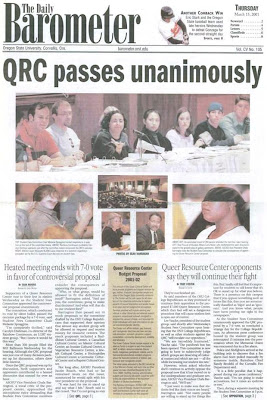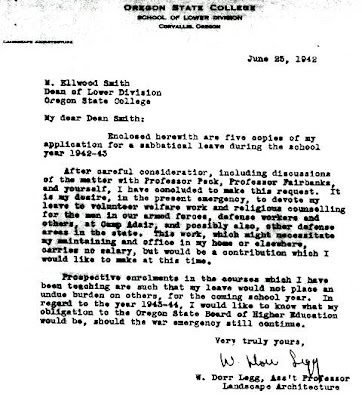PHOTO: President Trump's ban on transgender people serving in the military is favorably reported by the Christian Broadcasting Network News a.k.a. CBN "700 Club" TV show hosted by the anti-gay Rev. Pat Robertson, which I watched at 12:37PM Jul. 26, 2017 on over-the-air Eugene, Oregon KLSR-TV Channel 34-1 via Comcast Cable Channel 705. This show was originally shown at 10:37AM PT on the Corvallis Comcast Cable TV Channel 739 Freeform (formerly named the CBN and Family Channel) that was started decades ago by Rev. Robertson, and also broadcast for free on the over-the-air Eugene KMTR-TV Channel 16-1 at 11:37PM (simulcast on Comcast cable channel 703). Rev. Pat Robertson apparently has a contract to air his show on the Christian cable TV channel he founded and he apparently pays local TV stations to broadcast his program via their free, over-the-air TV channels because disclaimers are displayed at the start of the program saying it may or may not reflect the views of the station.
When I woke up on Jul. 26, the live TV news broadcast I was watching showed the first of several tweets President Trump was sending, which dramatically teased the next tweet he had not yet written, and so the TV anchors joked how this provided viewers with a great motivation to stick around through the commercial break in order to find out out what Trump was going to say in his next tweet. The anchors also all gave their joke guesses as to what it would be.
A few minutes later, Trump finished his follow-up tweeting and it was quickly reported as a "breaking news" story on my local Corvallis newspaper's Website in an AP story by the Associated Press, "Trump bars transgender people from US military," gazettetimes.com posted Jul. 26, 2017 accessed 11:00AM (The next day print edition front page AP story was by Robert Burns, "Trump prohibits transgender troops -- Tweet catches Pentagon off-guard; decision draws denunciations," Gazette-times, Jul. 27, 2017, p. A1-A2).
This news story prompted me to write the following letter to the editor:
President Trump's Jul. 26 ban on transgender individuals serving in the military is essentially a ban on all women serving in the military, according to my heterosexual, cisgender female cousin who served as one of the first female officers in the U.S. military several decades ago, while also raising a family of children in an opposite-sex marriage to a man.
My cousin's father, a U.S. Marines General, was appalled by how many men in the military angrily discriminated against his daughter because they thought only "real men" could be warriors.
Trump is harming military readiness by discriminating against all women, when he welcomes gay military men, but not women, to serve.
(Quoted from Thomas Kraemer, "Letter: Trump's ban harms the US military," Gazette-Times, Jul. 27, 2017, p. A8)
Also see the following links:
- Barnini Chakraborty, "Trump announces ban on transgender individuals serving in military - President tweets that military cannot be burdened with medical costs, disruption," foxnews.com posted Jul. 26, 2017.
- Michelangelo Signorile, "Trump's Cruel Military Ban On Transgender People Is An Attempt To Save His Base. Trump will throw the most vulnerable people under the bus when he feels threatened," huffingtonpost.com posted Jul. 26, 2017 - "So, to give the base something to chew on, he decided to throw them transgender people. It's an issue that has been percolating for months, driven by Vice President Mike Pence."
- John Aravosis, "Trump bans transgender troops to divert attention from growing Sessions," americablog.com posted Jul. 26, 2017 - "Why did Trump do this? To divert conservative attention from his growing war with Attorney General Jeff Sessions -- conservatives love Sessions, and are increasingly angry at Trump for trying to force Sessions to resign -- and to help Republicans at the ballot box in 2018. Donald Trump is now using the American Armed Forces for politics."
- Cavan Sieczkowski, "George Takei Offers Blistering Takedown Of Trump's Trans Military Ban," huffingtonpost.com posted Jul. 26, 2017
- "cisgender" wikipedia.org accessed Jul. 26, 2017 notes that the word "Cisgender (often abbreviated to simply cis) is a term for people whose gender identity matches the sex that they were assigned at birth. Cisgender may also be defined as those who have "a gender identity or perform a gender role society considers appropriate for one's sex." It is the opposite of the term transgender. . . . Cisgender was also added to the Oxford English Dictionary in 2013, defined as 'designating a person whose sense of personal identity corresponds to the sex and gender assigned to him or her at birth (in contrast with transgender).'"
The editor also printed the letter by Michael Beachley, "Letter: Cheering crowds lead to chills," gazettetimes.com posted Jul. 26, 201 who notes how he watched "Donald Trump speaking to the Boy Scouts of America Jamboree about the evils of a free press, encouraging them to boo Barack Obama and other political opponents. They were cheering." This made him recal his trip "Nuremberg a couple weeks ago I went to the Nazi Documentation Center and saw a film of Adolf Hitler speaking to the Hitlerjugend, the Hitler Youth, encouraging them in undermining the values of the traditional structures of German society. They were cheering."
As an aside note, I noticed at the bottom of the letters page it had a search function that listed all of my past letters: Search gazettetimes.com "Thomas Kraemer" -- on Jul. 27 it returned 73 results, including the letter above. I also noticed that the email address of opinion@gtconnect.com for letter submission was no longer on the page, but it had a link to Submit letter to the editor form gazettetimes.com that had a form you could use, and it gave the option to "send us an e-mail at news@gazettetimes.com" -- an email address that is very similar to the Albany Democrat-Herald email address for their sister newspaper.
On the loosely related subject of President Trump trying to get his attorney General Jeff Sessions to resign, I wonder if this is a fake attack on Sessions just to make it look like he doesn't trust Sessions, so that when Congress forces Trump to keep Sessions and Sessions's investigations exonerate Trump from any crime, it will look like it is believable instead of a conclusion fabricated by a Trump loyalists, which was the concern of many when Sessions was picked by Trump for the job.










